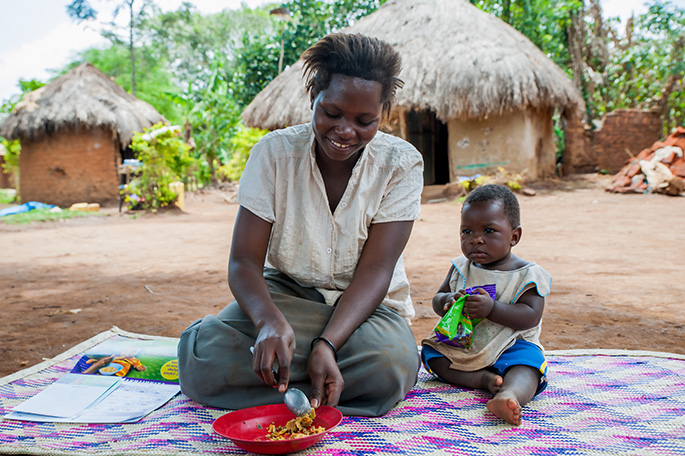
Program evaluations play a critical role in improving the quality and determining the effectiveness of the social and behavior change (SBC) strategies and approaches needed to achieve nutrition program goals. However, SBC is often not well understood by those designing or conducting evaluations.
Evaluation teams are typically composed of specialized technical experts who may not have experience implementing or evaluating SBC interventions. Without strong nutrition SBC evaluations, programmers and planners lack evaluative data to make strategic decisions or adaptations that could be helpful to improve nutrition outcomes.
Guides to Support SBC Program Evaluation
USAID Advancing Nutrition has developed guides to support USAID staff and implementing partners who design, supervise, support, or directly conduct an evaluation for a nutrition activity with an SBC component. Evaluations that are carefully designed and conducted can help nutrition SBC programmers identify what worked well, what could have been done differently, and how to design future programs.
Evaluating Social and Behavior Change Components of Nutrition Activities: A Design Guide for USAID Staff: This guide provides clear steps, a timeline, and additional resources to support USAID staff who are involved in designing an evaluation. Though this guidance is intended for USAID staff, other programmers will find this resource useful for developing SBC evaluations. The following guide expands on the process of conducting an evaluation after the design phase is completed.
Measuring Social and Behavior Change in Nutrition Programs: A Guide for Evaluators: This guide supports implementing partners who are involved with conducting an evaluation of an activity that uses SBC to improve multi-sectoral nutrition outcomes. The document focuses on enhancing skills by highlighting the nuances of evaluating SBC approaches and walking through the eight steps to conduct a nutrition SBC evaluation.
These guides will also undergo additional testing and iteration in the coming months. As a next step, the project’s technical experts will develop a toolkit for designers and evaluators that will include supporting documents that complement the guides.